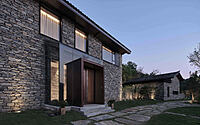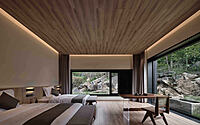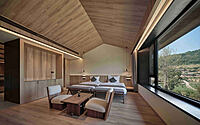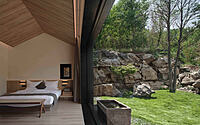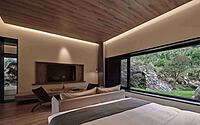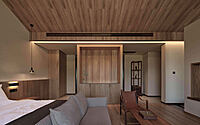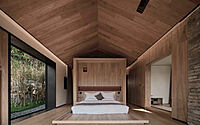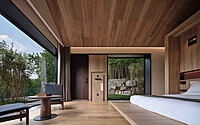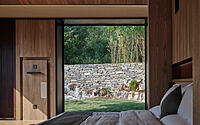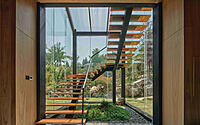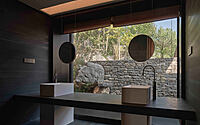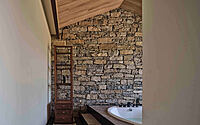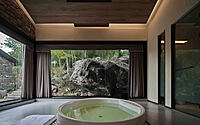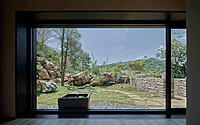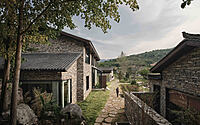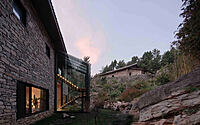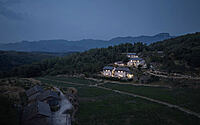Nanchawan Village Stone Houses by Current-Newswire
Introducing Nanchawan Village Stone Houses – a residential project located in the Yiling District of Yichang, China. Redesigned in 2021 by Current-Newswire, this project brings together the best of modern and traditional design styles.
The contemporary architecture of the Nanchawan Stone Houses pays homage to the area’s natural environment, local customs and way of life. With its use of locally sourced mountain stone, organic building layout and its use of traditional Yichang stone architecture as reference, the project brings rural texture to life. By maintaining the existing character of the region, Nanchawan Stone Houses respectfully minimizes its impact on the environment.
Step inside and discover the unique interior combinations, crafted by local craftsmen with a wide array of skills, and be mesmerized by the breathtaking views of the Three Gorges area along the Yangtze River. Welcome to the contemporary countryside!


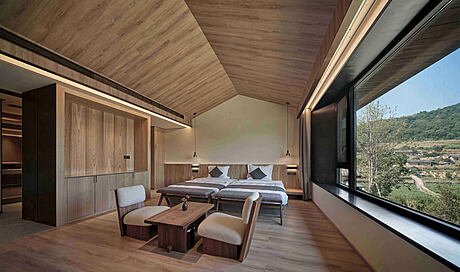

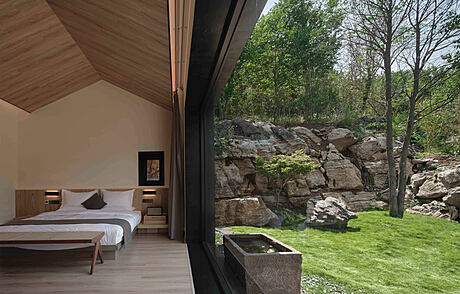

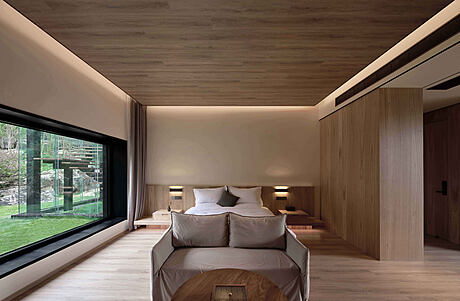
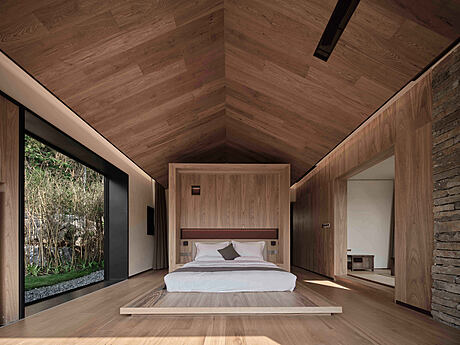
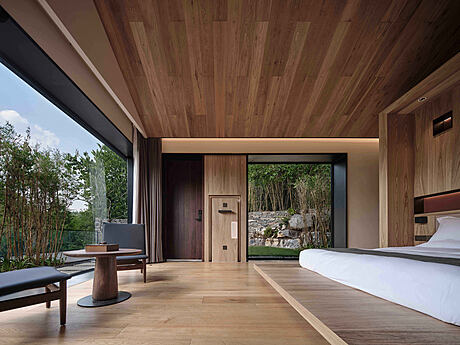


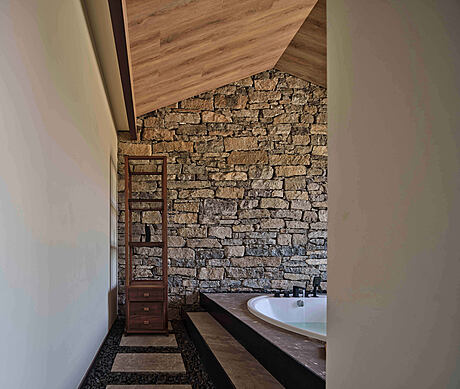
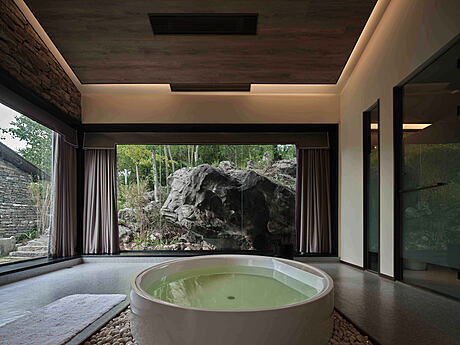

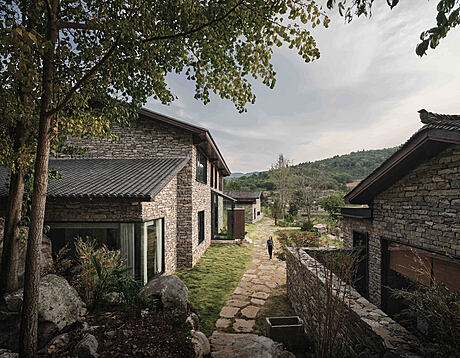
About Nanchawan Village Stone Houses
Recently, we have noticed a transformation in the relationship between urban and rural living: rather than being one of opposites, it has become a mutual enrichment. However, the fact remains that the countryside lacks the amenities and convenience of the city, and the city is largely separated from nature due to distance and lifestyle, giving life in the countryside a heightened standing for those who live in the city.
Today, architects in China are challenged to find solutions for the problems of building projects in the countryside: how can rural culture be appropriately revitalized? How can rural renewal go beyond commercial models, yet retain the unique texture of the countryside?
With the development of new resort hotels, B&Bs, and other accommodation options, as well as easier access to media exposure online, opportunities for urban dwellers to experience previously unknown parts of the countryside have become much more accessible. Rural areas are no longer only open to a privileged few, but are now available to a large number of curious visitors.
Rural Texture: Unobtrusive design in the countryside
The Nanchawan Stone Houses project began with a concept that the countryside takes precedence over design. Located in a small mountain village in Hubei Province, adjacent to the famous Three Gorges area along the Yangtze River, the project aimed to develop the local architectural vernacular in a new direction, while maintaining the existing character of the region. During the design process, the architects had to take into account the existing natural environment, as well as the local customs and way of life.
Two buildings in Phase 1 of the project were developed, originally belonging to two brothers. The buildings were constructed from locally sourced mountain stone and suffered from constant drafts and leaks when it rained. To address these problems, the architects had to consider the natural environment, the local customs, and the way of life in the village.
The design process for Nanchawan Stone Houses was focused on finding a balance between preserving the local character and modernizing the existing structures. The ancient villages of the region had grown naturally over time, in response to the environment, and the architects had to find a way to replicate that organic development using contemporary design.
The Nanchawan Stone Houses project is an example of unobtrusive rural design, which combines modern aesthetics and traditional building materials, while respecting the existing landscape and local culture.
Spatial Textures: A new approach for traditional stone architecture
Architects used traditional Yichang stone architecture as the reference for their project, aiming to retain the original character of the ancient village while expressing both the continuity of time and progression. The distinctive regional attributes of the local stone were used to create a clear connection to rural aesthetics, as well as to provide a timeless quality.
In the second phase, several buildings were laid out on the hillside in an irregular pattern, continuing and evolving the architectural relationship with the site established in the first phase. The second phase houses were sited in response to the environment, rather than oriented towards one another, their positions determined by the contours of the terrain – just as existing ancient rural houses had been built in the area – creating a sense of organic order while respecting the environmental conditions of the site.
Stone was used in lieu of traditional wood, connected to a steel structural system to ensure strong and stable buildings. Traditional sloping roof forms with simplified eaves were implemented, while a modern window frame system composed of varying opening sizes provided a wide range of views of the surroundings. This allowed impressions of rural life and nature to be seen from within the new interiors, which had a modern sensibility.
Natural Texture: Continuing the tradition of stone houses through design
Designers have incorporated a respectful and sensitive strategy to minimize the impact of the new houses on their environment. This approach has preserved the site’s existing natural elements, maintained the hierarchical structure of the village architecture, and allowed natural vegetation to regrow following construction.
The construction process provided some surprises when part of the existing mountain soil was excavated and an impressive swath of rock was uncovered. The larger windows of the buildings were then directed to face the rocks, creating a powerful visual relationship with the architecture and its visitors.
The texture of the mountain stone is a representation of natural order within disorder. The layout of the buildings and their window openings correspond to its proximity and distance, providing subtle shifts in view and atmosphere, so that each indoor space has a unique frame of this timeless landscape. Mountain stone and wood were also used internally to create a pleasing ambience of natural color and texture.
The Texture of Time: Extending the value of design
“Rural construction requires time, especially hand-crafted construction.” The architects knew traditional building techniques could not be rushed, so they worked in close collaboration with local craftsmen to ensure the project was completed.
Both construction materials and interior decoration feature stone, while wood, steel, and stone in varying proportions have been used to create a range of different interior combinations. Local craftsmen with a wide array of skills were enlisted to give the project a timeless, rural feel.
The unique texture of rural life is also reflected in the restoration of a community where people can gather, stroll along uneven stone roads, and gaze at distant cottages with smoke rising from their chimneys. The city’s hustle and bustle has been replaced by a simpler way of life and direct rural experience.
To be sure, the contemporary countryside is not always perfect and it is not a place for designers to show off their elitism. The concept behind the stone houses of Nanchawan Village aims to promote architectural aesthetics in the countryside by working with the existing conditions of rural China, and it is hoped that its values will be adopted in future projects.
Photography courtesy of Current-Newswire
Visit Current-Newswire
- by Matt Watts